The One Thing You Need to Know to Prevent a Torn Hamstring
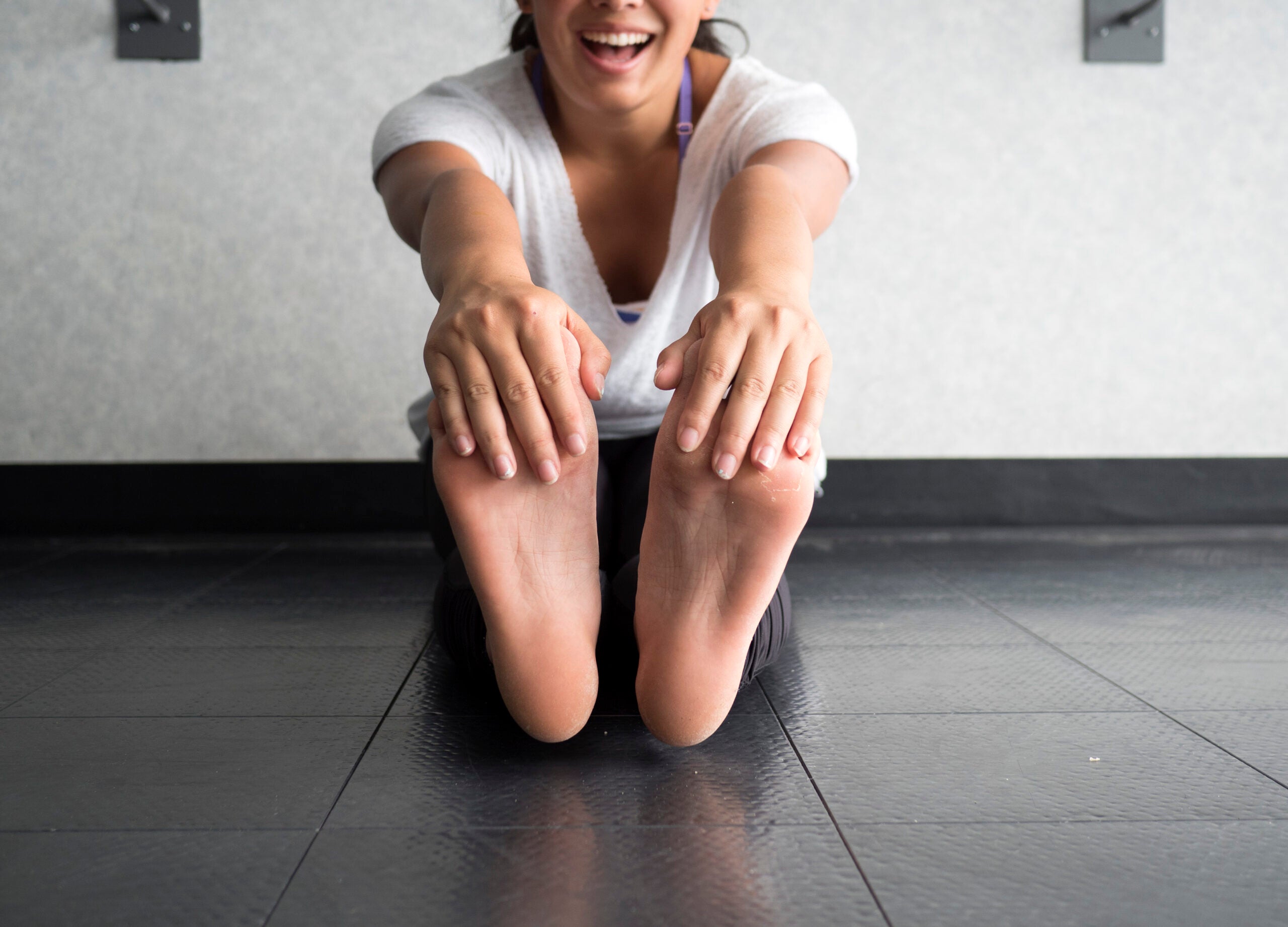
Smiling active woman grabbing her feet to stretch hamstrings in the studio (Photo: Getty Images)
I have found healing on my yoga mat in many ways: the reversal of critical beliefs in my head, breaks in my heart, and aches in my body, including recovery from a torn hamstring. Although I’m a big believer in using my yoga practice as medicine whenever possible, as with any medicine, if we’re not careful, we can actually overdo it and cause more damage than good.
This is especially true when it comes to stretching the hamstrings. Many people practice yoga to increase their flexibility, specifically this muscle group, yet they easily overdo things, even in common yoga poses. This can eventually lead to not only soreness but a torn hamstring.
The anatomy of the hamstrings
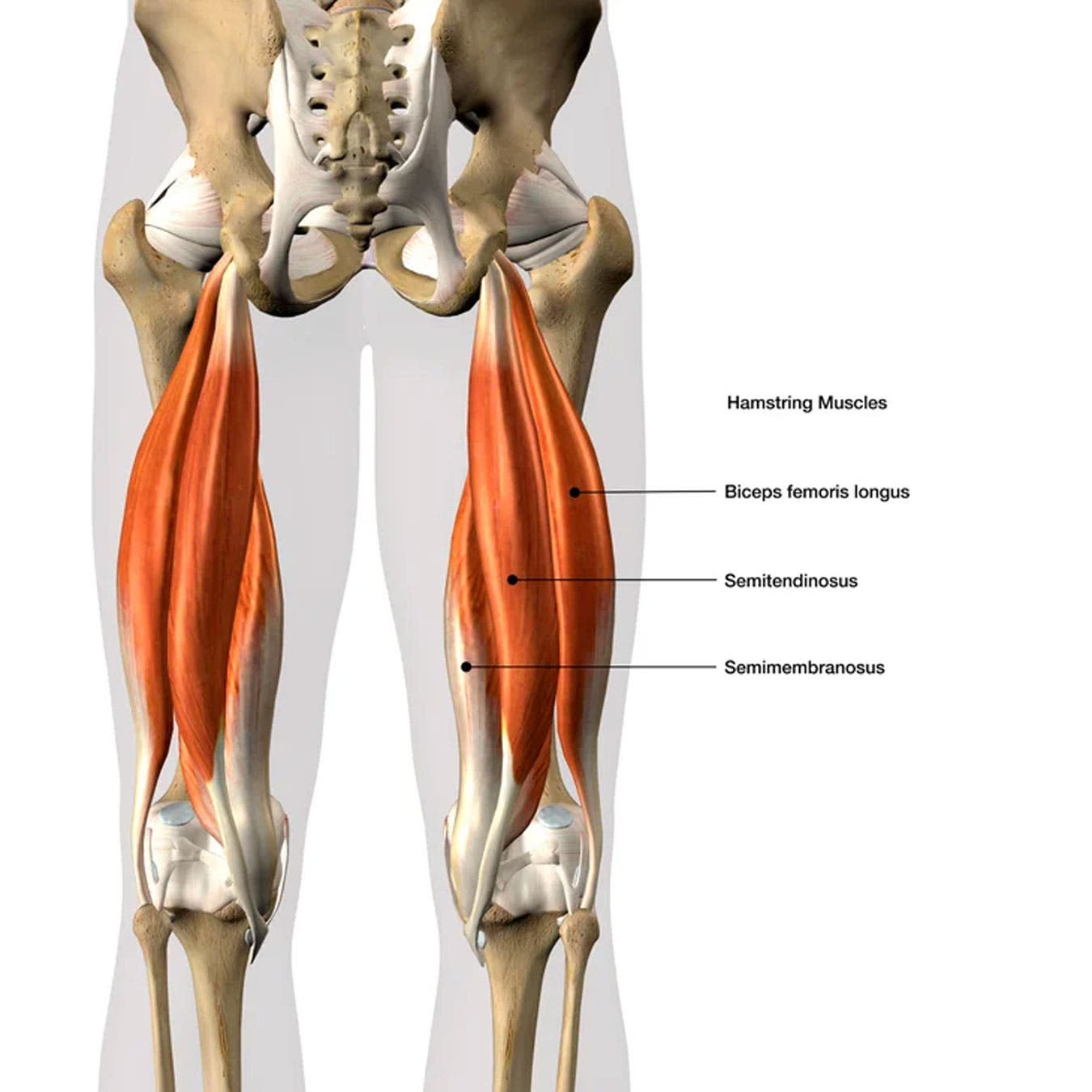
The hamstrings consist of three distinct muscles—the biceps femoris longus, semitendinosus, and semimembranosus—located on the back side of your thigh. These muscles share a common attachment at your ischial tuberosity (sit bone) and then cross your knee on either side and insert on your lower leg.
The primary function of hamstring contraction, or shortening of the muscle, is to flex (bend) the knee, as in Utkatasana (Chair Pose), and to extend the hip at the pelvis, as when you extend your leg straight behind you in Virabhadrasana 3 (Warrior 3 Pose). Anjanayasana (Low Lunge) actually takes the front leg hamstrings into flexion while the back leg hamstrings are in extension.
Conversely, to stretch the hamstrings, you need to lengthen the muscles. This happens in postures where one or both legs are straight. Yoga classes tend to include an abundance of these. In vinyasa classes, we spend a lot of time in Adho Mukha Svanasana (Downward Facing Dog). In the Ashtanga method, the entire first series, also known as primary series, is devoted to lengthening the hamstrings, with a large number of seated straight-legged poses practiced one after the other.
How not to stretch your hamstrings
People typically blame their hamstrings for the tightness they feel while sitting or trying to bend forward. But restriction when bending forward can be due to a number of factors, including muscle and bone length and even gluteus maximus tightness. Relying only on hamstring-lengthening approaches to asana could potentially be harmful for some tighter bodies. We could be trying to force the hamstrings beyond their limits, which can result in overstretching and, eventually, may even lead to a torn hamstring.
Students with lax or hypermobile ligaments may also be at risk of a torn hamstring. They tend to move beyond their muscles’ “normal range,” which can lead to an overstretching and tears, usually at the place where the muscle attaches to the bone.
Shifting away from a place of wanting to “go deeper” and toward a place of creating balance between stretching and strengthening can minimize the potential of a hamstring tear.
How to prevent a torn hamstring
One simple way to prevent a torn hamstring is to not overstretch it. Another often-overlooked way is to focus on balancing the stretching with strengthening of the hamstring muscles. You can do this in poses that traditionally lengthen the hamstring by engaging your muscles in ways that might be unfamiliar to you.
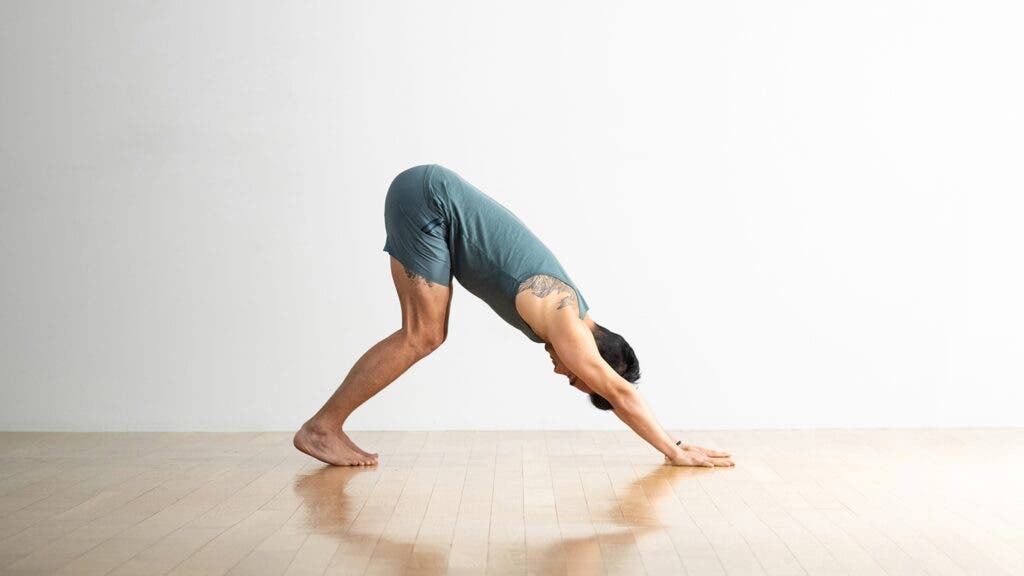
In straight-leg poses
Action: Keep your knee slightly bent and imagine that you’re trying to press your calf muscle forward into your shin bone, while you press your thigh bone back into the hamstring group.
Poses you can practice this in:
Adho Mukha Svanasana (Downward-Facing Dog Pose)
Uttanasana (Standing Forward Bend)
Ardha Uttanasana (Half Standing Forward Bend)
Trikonasana (Triangle Pose) *both legs
Parsvottanasana (Pyramid Pose) *both legs,
Virabhadrasana II (Warrior 2 Pose) *back leg
Parsvakonasana (Side Angle Pose) *back leg
Dandasana (Staff Pose)
Janu Sirsasana (Head-to-Knee Pose) *straight leg
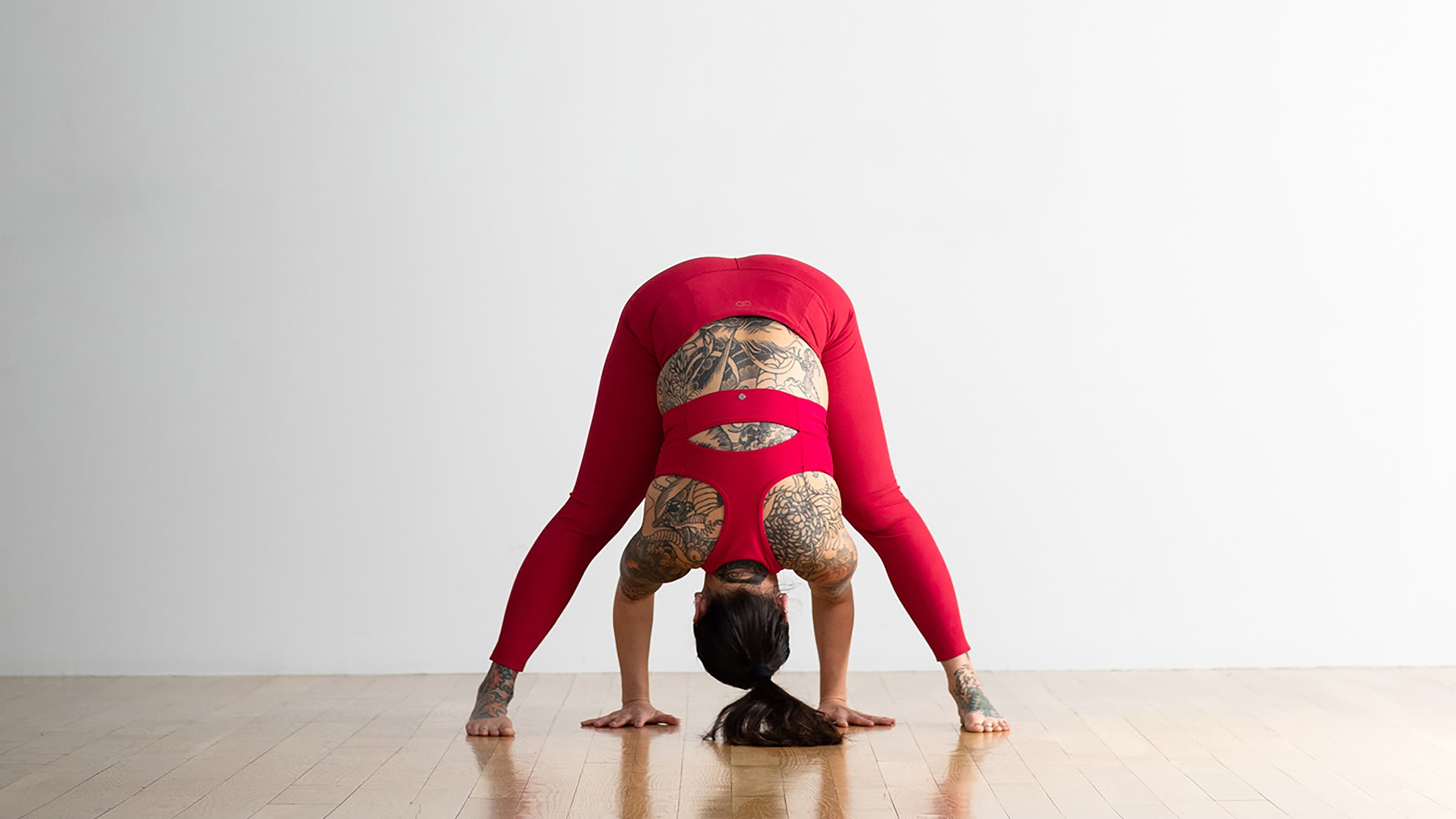
In forward bends (upper leg)
Action: The tendinous area around your sit bones needs protection in symmetrical forward bends. You want to draw your sit bones underneath you, as if pulling your bum toward your knees,. This is called a posterior tilt.
Poses you can practice this in:
Adho Mukha Svanasana (Downward-Facing Dog Pose)
Uttanasana (Standing Forward Bend)
Ardha Uttanasana (Half Standing Forward Bend)
Prasarita Padottanasana (Wide-Legged Standing Forward Bend)
Dandasana (Staff Pose)
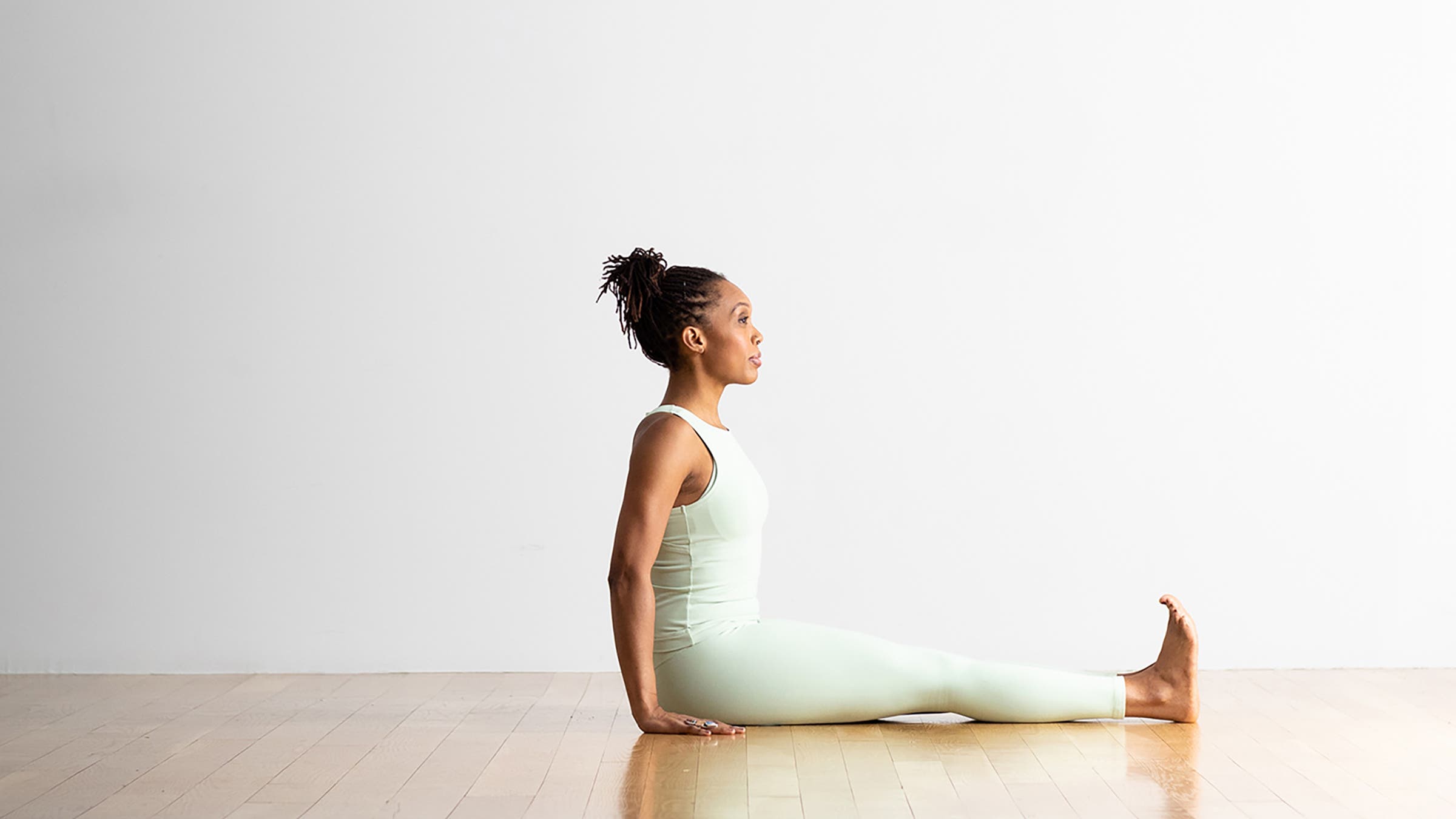
In forward bends (lower leg)
Action: The tendon attachments behind the knee are at risk of overstretching, as well. To protect them, you can learn how to engage the calf muscles and the lower part of the hamstring muscles by press the top of your calf muscle toward your shin bone and your femur bone back toward your hamstrings at the same time.
Poses you can practice this in:
Adho Mukha Svanasana (Downward-Facing Dog Pose)
Uttanasana (Standing Forward Bend)
Ardha Uttanasana (Half Standing Forward Bend)
Dandasana (Staff Pose)
Janu Sirsasana (Head-to-Knee Pose) *straight leg
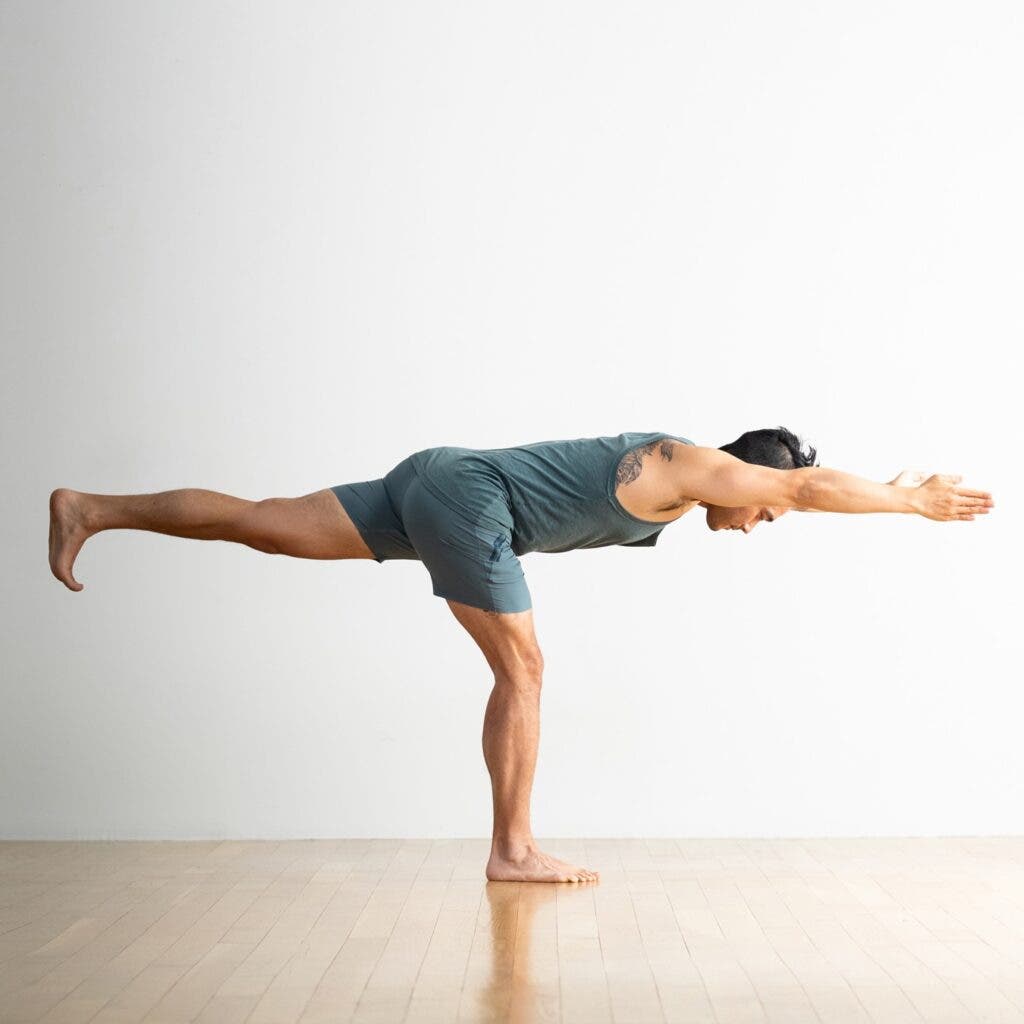
When one or both legs is in extension behind you
Action: As you press your femur toward your hamstrings, imagine your calf moving in the opposite direction, toward your shin bone.
Poses you can practice this in:
Virabhadrasana III (Warrior 3 Pose) *back leg
Anjanayasana (Crescent Lunge) *back leg
Salabhasana (Locust Pose)
About our contributor
Sarah Ezrin is an author, world-renowned yoga educator, popular Instagram influencer, and mama based in the San Francisco Bay Area. Her willingness to be unabashedly honest and vulnerable along with her innate wisdom make her writing, yoga classes, and social media great sources of healing and inner peace for many people. Sarah is changing the world, teaching self-love one person at a time. She is also the author of The Yoga of Parenting. You can follow her on Instagram at @sarahezrinyoga and TikTok at @sarahezrin.